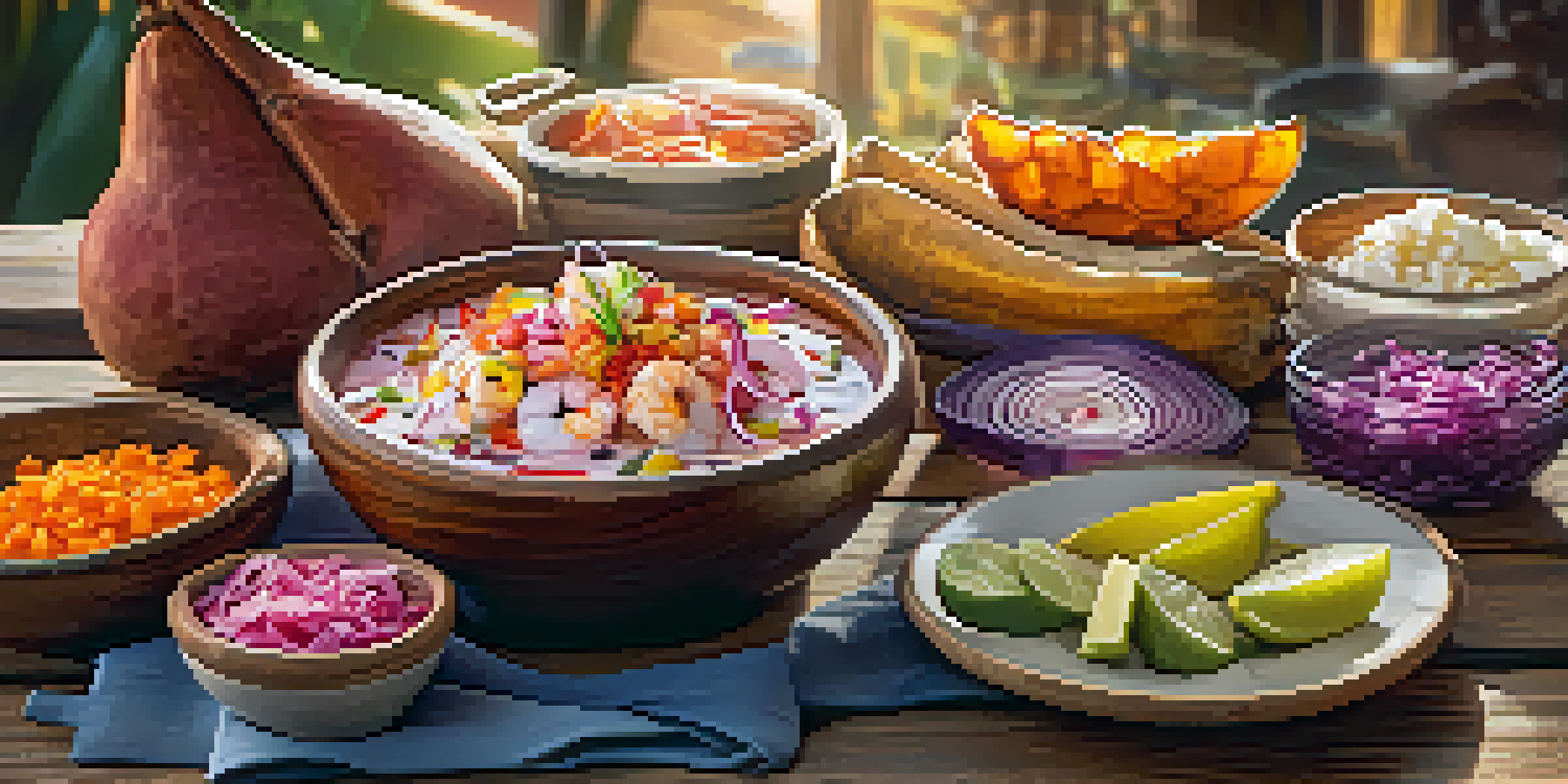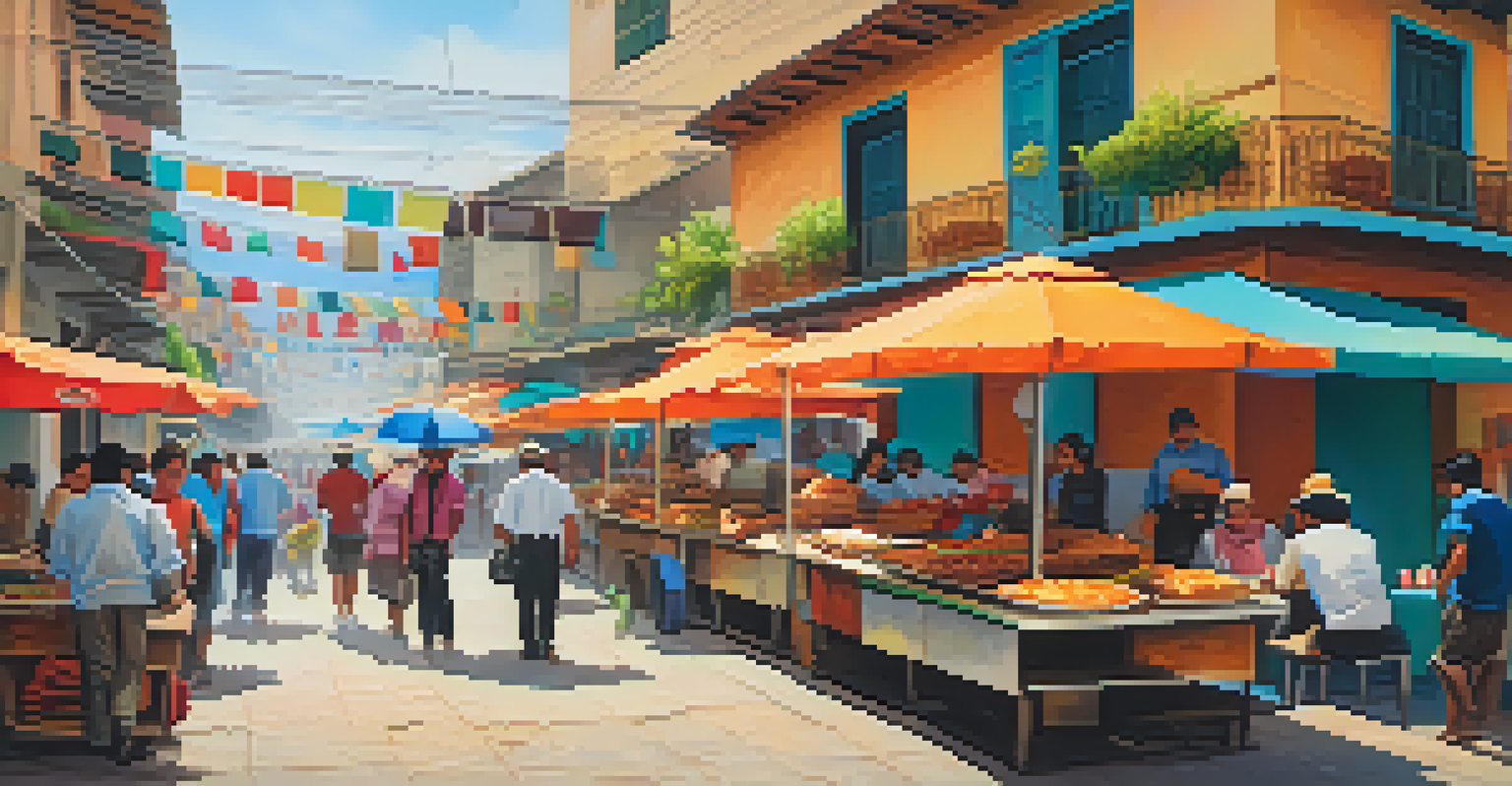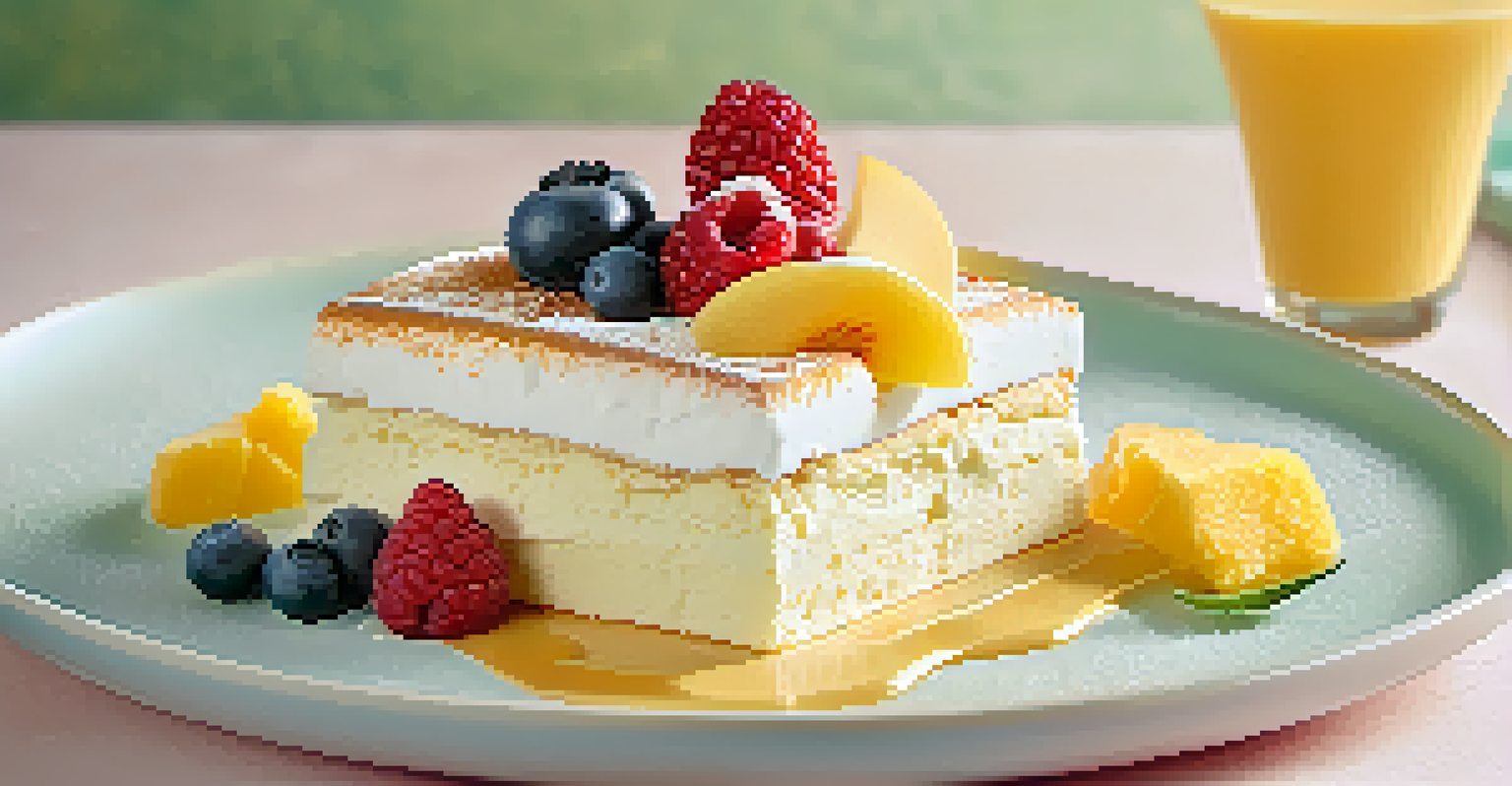Exploring Peruvian Cuisine: A Taste of Cultural Heritage

The Rich Tapestry of Peruvian History and Food
Peruvian cuisine is a vibrant reflection of the country's diverse history. From ancient Incan traditions to Spanish colonial influences, every dish tells a story. This rich tapestry of flavors is shaped by the geography of Peru, with its mountains, coastlines, and rainforest all contributing unique ingredients.
Food is our common ground, a universal experience.
For instance, the coastal regions are known for their fresh seafood, while the Andes provide hearty grains and tubers. The Amazon, on the other hand, offers exotic fruits and herbs that add depth to many dishes. This geographical diversity not only enriches the cuisine but also showcases Peru’s cultural heritage.
Related Resource
As you explore Peruvian food, you’ll discover how these elements combine to create a unique culinary experience. This fusion of flavors and traditions makes Peruvian cuisine not only delicious but also a celebration of its cultural roots.
Key Ingredients Defining Peruvian Cuisine
Peruvian cuisine is marked by its use of fresh, local ingredients, with staples like potatoes, corn, and various spices taking center stage. Did you know that Peru is home to over 4,000 varieties of potatoes? This incredible diversity allows chefs to create many unique dishes, each with its own flavor profile.

Additionally, the use of ají peppers adds that perfect kick to many recipes, offering a spectrum of heat and flavor. Ingredients like quinoa and fresh fish, especially in coastal areas, showcase the healthful and varied nature of Peruvian cooking.
Peruvian Cuisine Reflects Diversity
The rich flavors of Peruvian cuisine are shaped by its diverse geography and cultural influences, making each dish a unique story.
These ingredients not only reflect the agricultural bounty of the country but also highlight the importance of sustainability in Peruvian culinary practices. By emphasizing local produce, Peruvian cuisine honors its rich natural heritage while promoting a farm-to-table ethos.
Signature Dishes You Must Try
When exploring Peruvian cuisine, certain dishes stand out as must-tries. Ceviche, for instance, is perhaps the most famous, featuring fresh fish marinated in citrus juices and spiced with ají peppers. This dish perfectly encapsulates the coastal flavors of Peru and is a refreshing treat.
Cooking is like love. It should be entered into with abandon or not at all.
Another iconic dish is lomo saltado, which combines stir-fried beef with onions, tomatoes, and French fries, served with rice. This dish reflects the Chinese influence on Peruvian cooking, showcasing the beautiful blend of cultures within the cuisine.
Related Resource
Don't forget to try causa, a layered potato dish filled with various ingredients, or the hearty chupe de camarones, a shrimp chowder that warms the soul. Each of these dishes tells a story, inviting you to dive deeper into the flavors of Peru.
The Role of Street Food in Peru
Street food is an integral part of the Peruvian culinary landscape, providing a taste of authentic flavors on the go. Vendors selling treats like anticuchos (grilled skewered hearts) or empanadas can be found on nearly every corner, making it easy to indulge in local fare.
These street foods are not just convenient; they offer a glimpse into everyday Peruvian life and culture. Each vendor often has their own secret recipe, allowing you to experience a variety of flavors in a single city.
Local Ingredients are Key
Staples like potatoes, corn, and ají peppers highlight the importance of fresh, local ingredients in creating authentic Peruvian dishes.
Moreover, street food fosters community as people gather around food stalls, sharing stories and laughter. This communal aspect adds warmth to the dining experience, showcasing the heart of Peruvian hospitality.
Celebrating Cultural Heritage Through Festivals
Peruvian cuisine is celebrated through various festivals that highlight its rich culinary heritage. Events like Mistura, one of the largest food festivals in Latin America, bring together chefs, farmers, and food enthusiasts to celebrate Peru’s diverse flavors.
During these festivals, attendees can sample a wide array of dishes, attend cooking demonstrations, and learn about the history of ingredients. This immersive experience not only delights the palate but also educates visitors about the cultural significance of each dish.
Related Resource
These culinary celebrations are a testament to the pride Peruvians have in their food and traditions. Through these festivals, the country showcases its commitment to preserving its culinary heritage while embracing modern influences.
The Influence of Globalization on Peruvian Cuisine
Globalization has had a significant impact on Peruvian cuisine, introducing new ingredients and techniques while allowing for cultural exchange. This melding of traditions has led to innovative dishes that maintain a connection to their roots.
Chefs like Gastón Acurio have played a pivotal role in elevating Peruvian cuisine on the world stage, creating fusion dishes that incorporate elements from other cultures. For example, you might find sushi rolls that use Peruvian ingredients or Italian pastas with a local twist.
Culinary Festivals Celebrate Food
Festivals like Mistura showcase Peru's culinary heritage, allowing attendees to experience and learn about the country's diverse flavors.
While globalization brings new flavors into the mix, it also raises questions about authenticity. Nevertheless, the evolution of Peruvian cuisine reflects a dynamic culture, proving that food is a living, breathing expression of identity.
Savoring the Sweet Side: Desserts in Peru
Peruvian desserts offer a delightful way to end any meal, with unique flavors and textures that are sure to satisfy any sweet tooth. Traditional treats like suspiro a la limeña, a creamy dessert flavored with port and topped with meringue, are popular choices.
Another favorite is tres leches cake, a sponge cake soaked in three types of milk, making it incredibly moist and rich. These desserts often incorporate local ingredients like lucuma, a fruit native to Peru that adds a distinct flavor.

Exploring the sweet side of Peruvian cuisine not only delights the palate but also showcases the country’s creativity and resourcefulness in using local ingredients. Each dessert is a testament to the culinary heritage that continues to thrive in Peru.